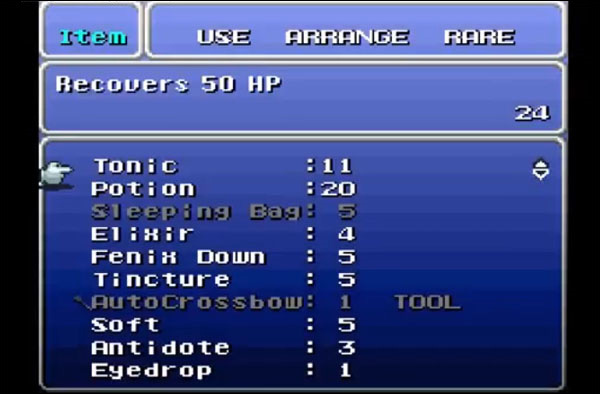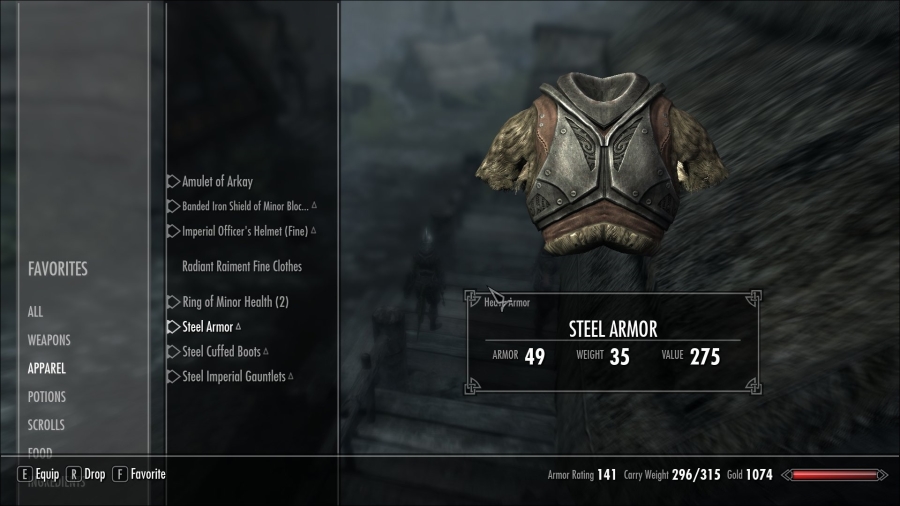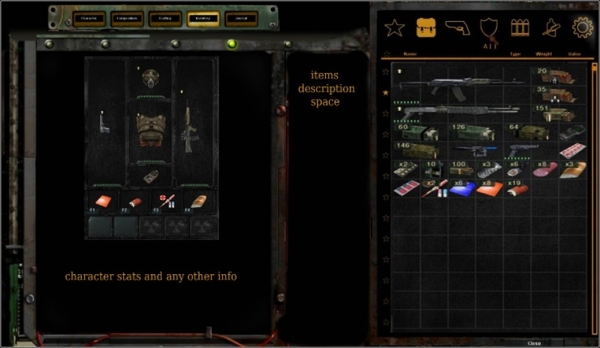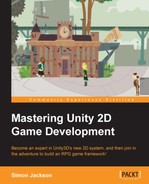Your character's layout is usually a lot more restricted as compared to that of a storefront. However, the character's layout needs to follow the same design pattern you are using in your game.
These systems usually fall into a couple of patterns.
Players are limited to a certain number of each item. The number can vary based on the item (for instance, you can have only one weapon) or its effect on the player's load. As a rule of thumb, 99 should be the maximum number. However, it's up to how your game will use the item to denote its maximum number.
In the Final Fantasy series of games, Rule of '99 was used throughout its inventory system, allowing the player to carry no more than 99 potions at a time or anything else for that matter, as shown in the following screenshot:

A system based on the strength, endurance, and energy of a player is a faux-style system. It ensures that the player cannot carry more than he or she is able to; generally though, it doesn't take into account the size of the item, just its weight. This provides a more taxing system for the player, forcing them to only carry what they need.
Skyrim implements this system very well; it not only forces the player to manage their load when looting but also focuses on leveling up the player to increase what they can carry, as shown in the following screenshot:

A slot-based system is a variation of the preceding encumbrance system. Instead of weight, it uses a grid system for the player's inventory and assigns a certain number of those grid points to an item. These points relate to how bulky or awkward a particular item is going to be. This generally limits the player more than other systems because it forces the user to reserve enough space to carry the items they really need.
The Fallout series and the upcoming Wasteland 2 games implement a very effective slot-based system.
It gets tricky for the player when large mission items require a lot of slots. Refer to the following screenshot:

Another approach is to go a step further with an inventory system and evolve it into a mini game in itself. Generally, players don't just move things around or sort them; instead, they start combining items within the inventory to create or craft new items or just upgrade them. A crazy idea I saw that was going around was to turn the inventory screen into a game of Tetris with new items being dropped; if you could place them, you would be successful.
It certainly brings a new challenge. Moreover, if the bandwidth of your game can allow it, it's certainly another opportunity to make use of.
The most complex system to implement is a real world or a simulated kind of inventory pattern to use. Attempting to make a player carry things around needs to be as real as possible. It embodies all of the preceding systems and adds rules around the need for special belts to carry axes/swords. Hooks and backpacks have to be carefully packed. In some games, the player carries lots of items on their belt or back; this generates noise, making them less stealthy.
